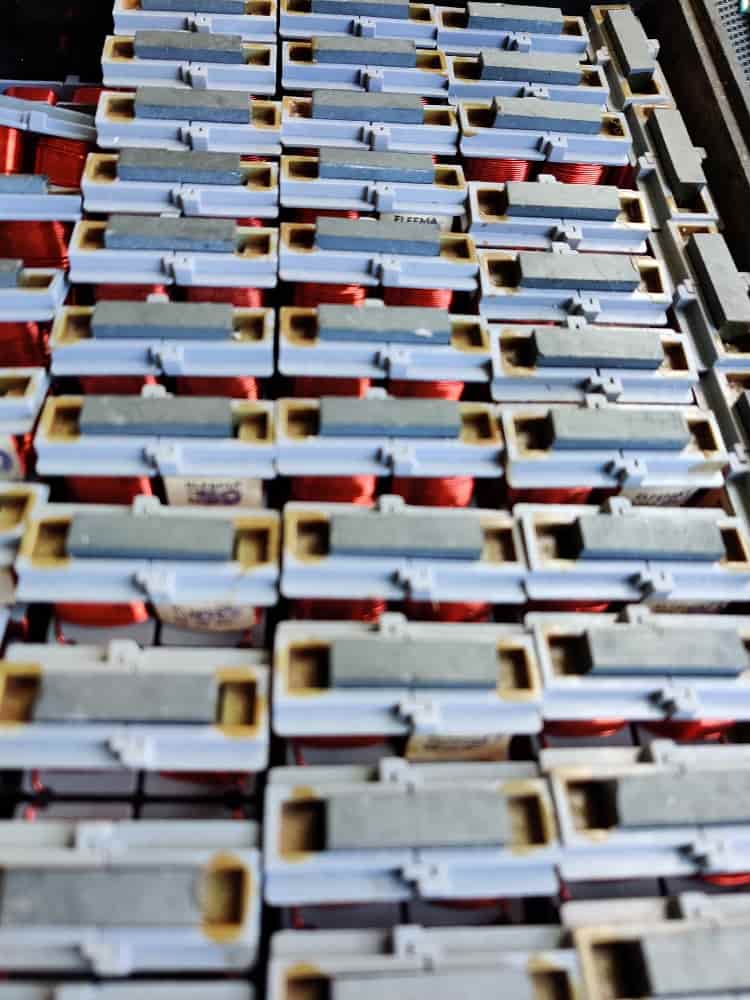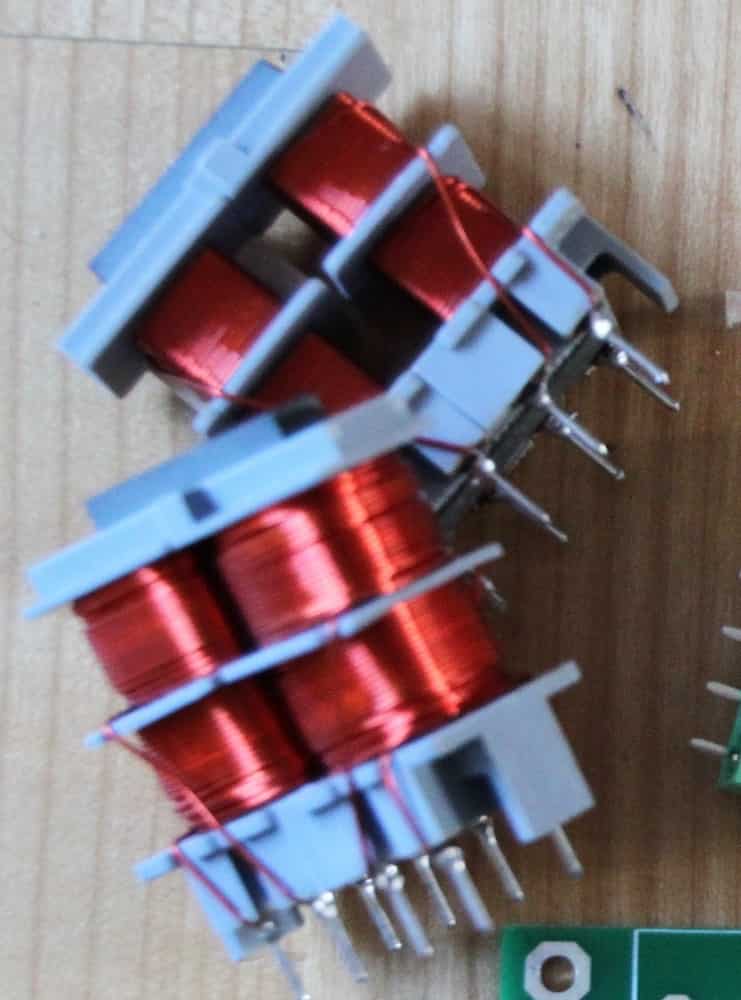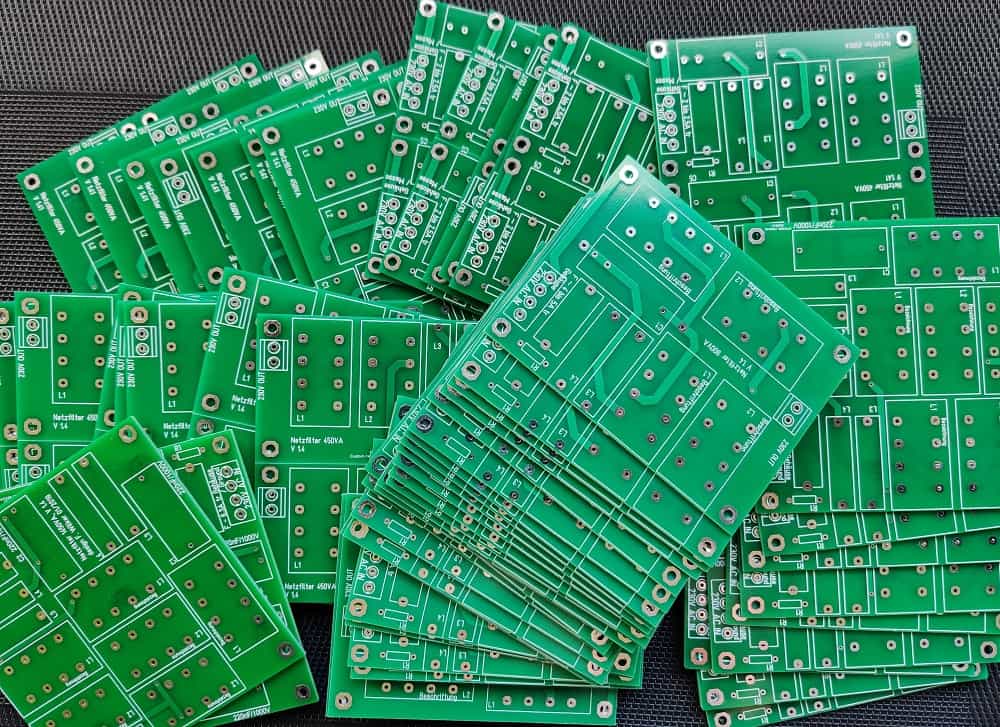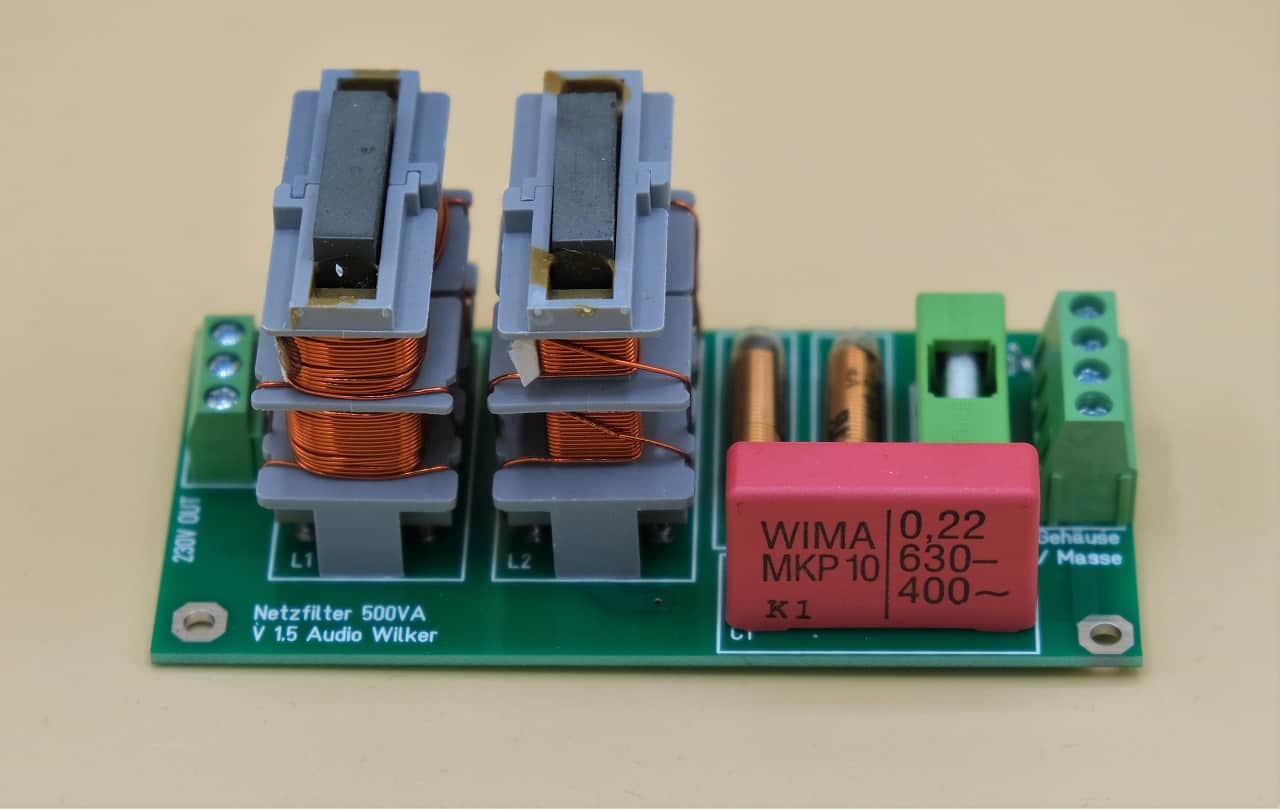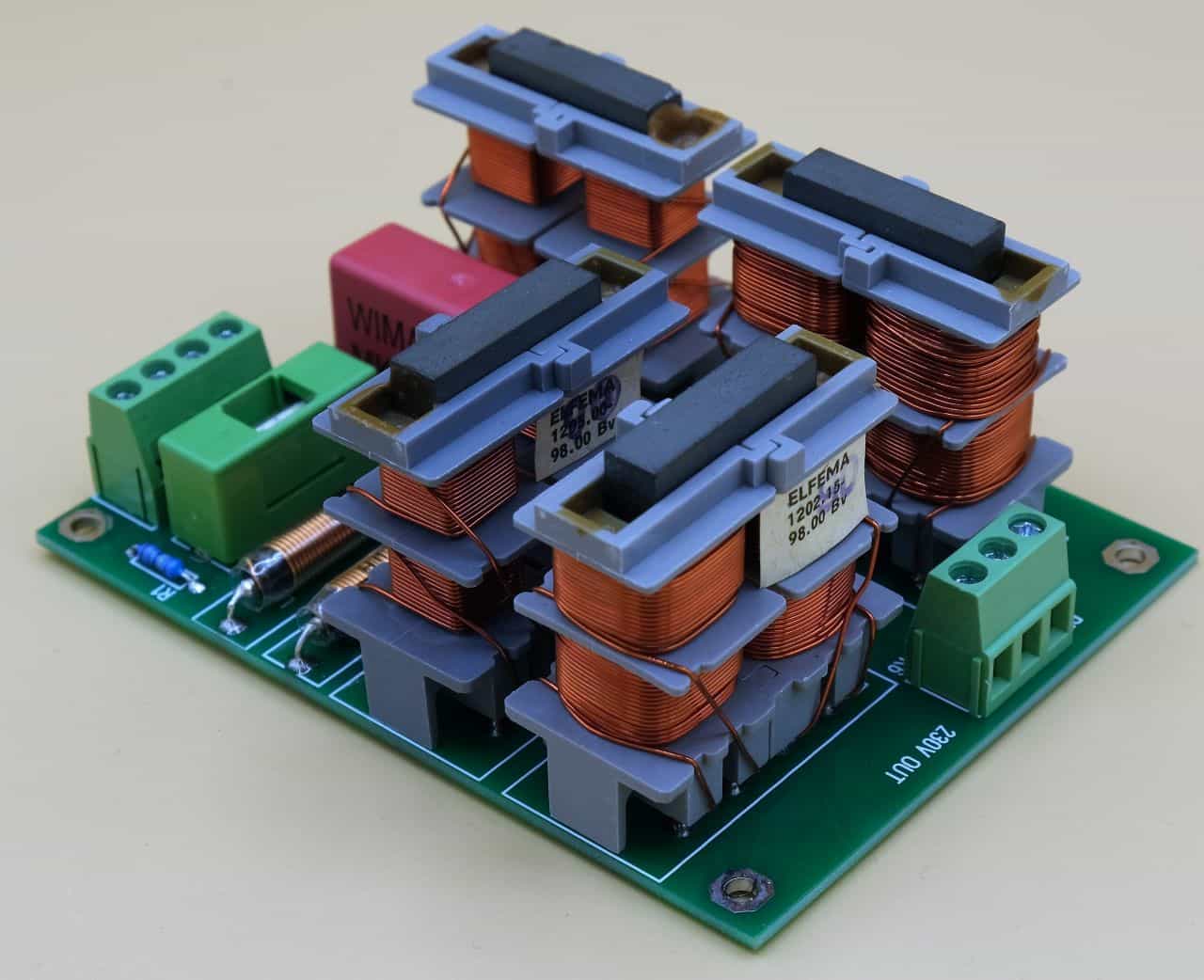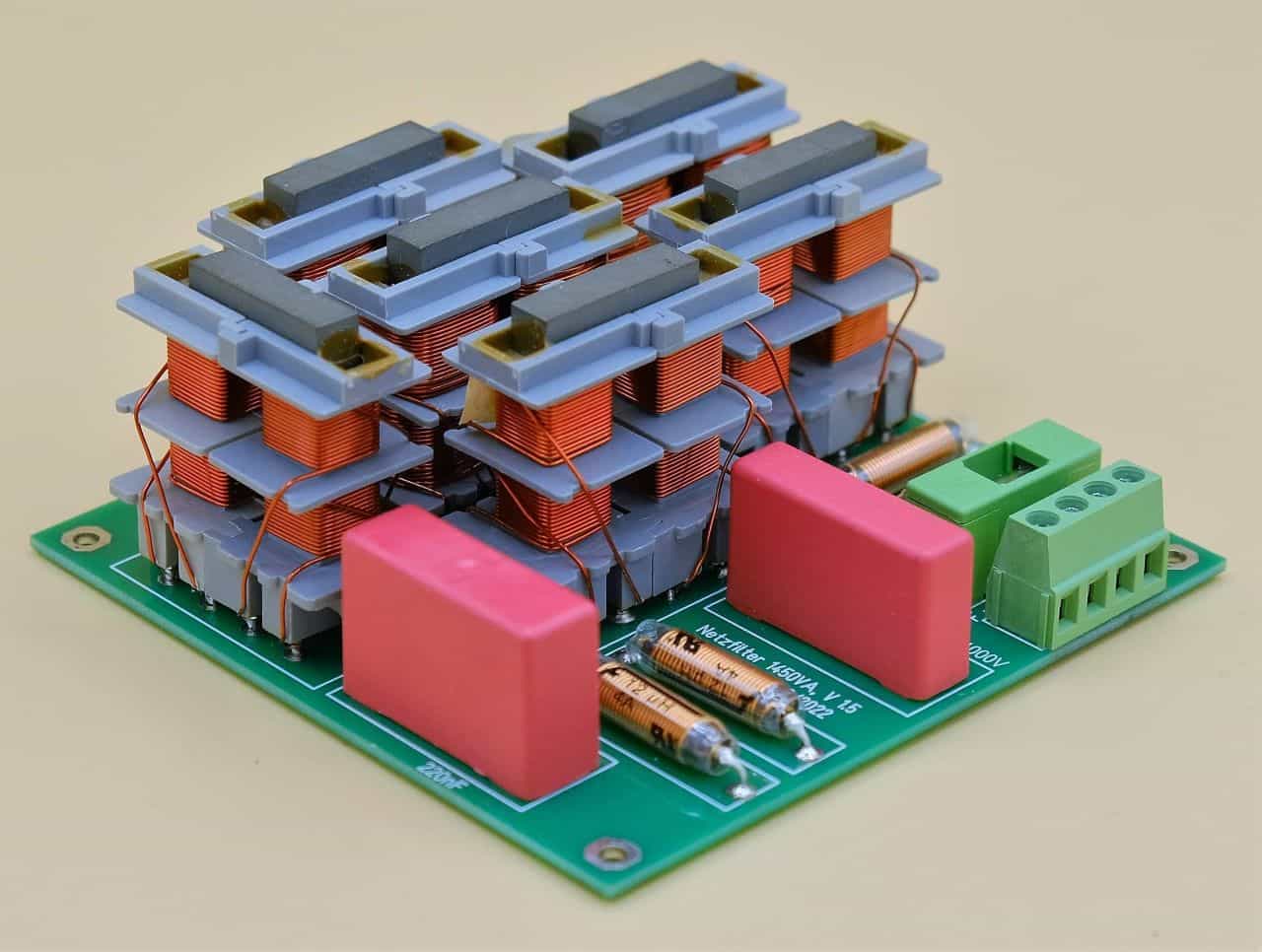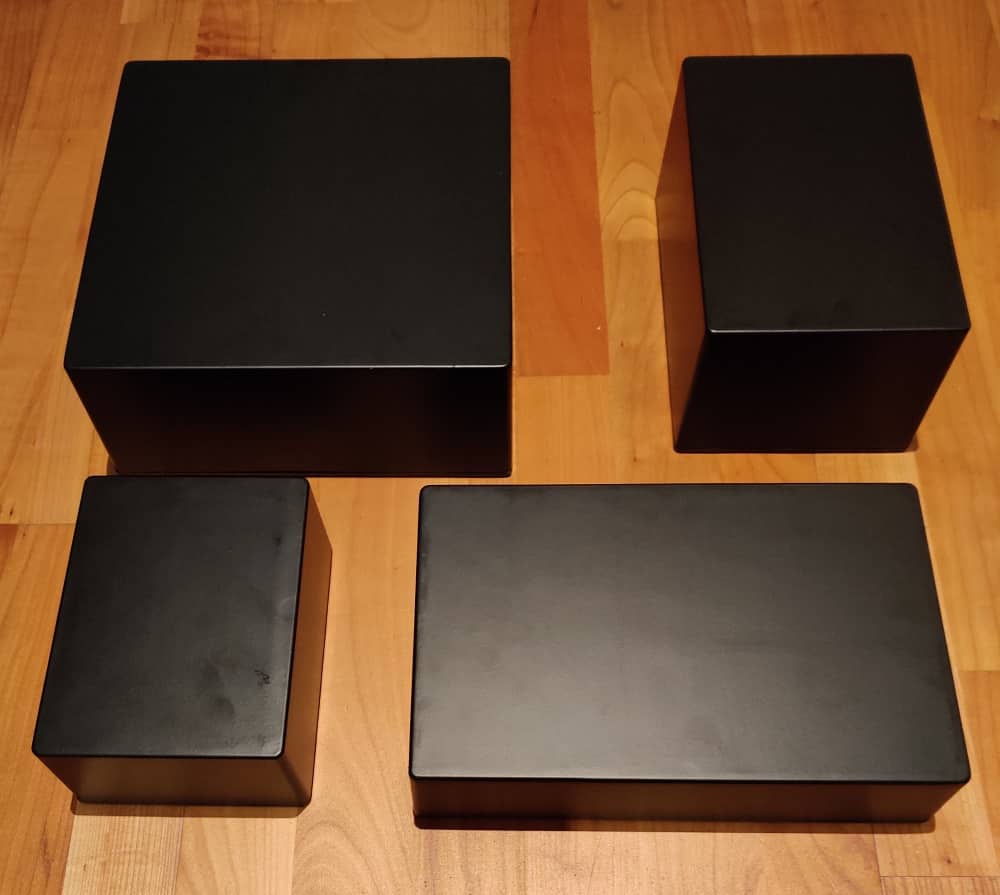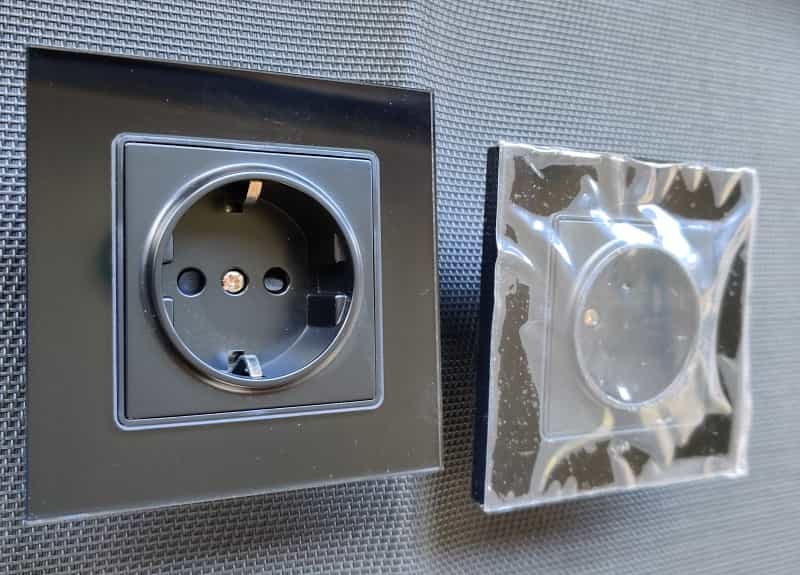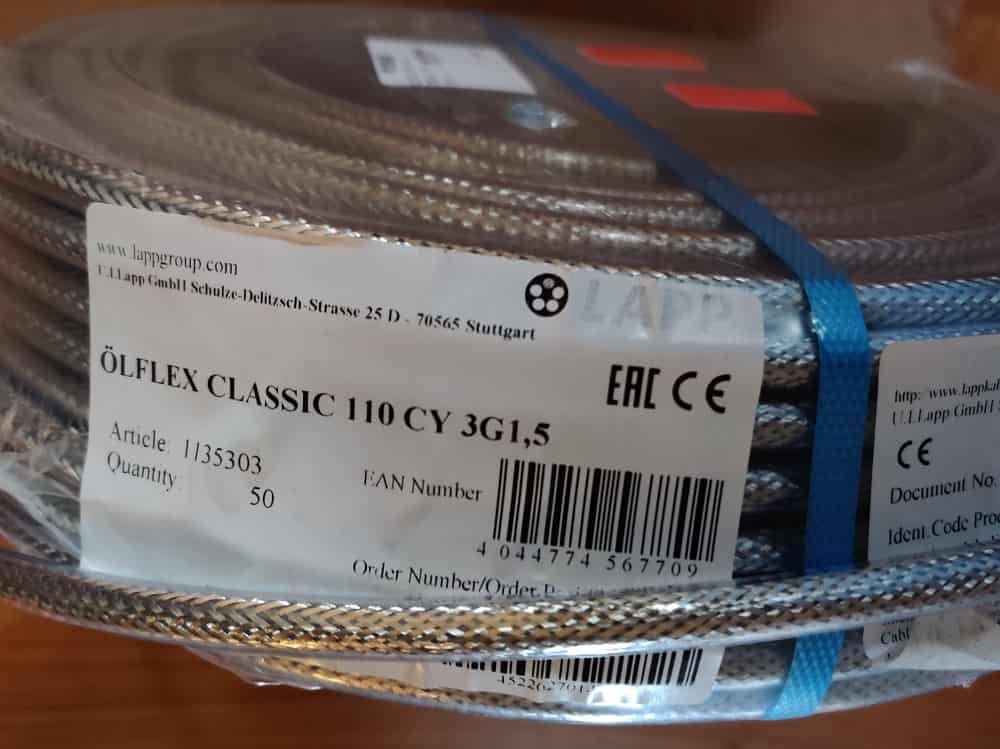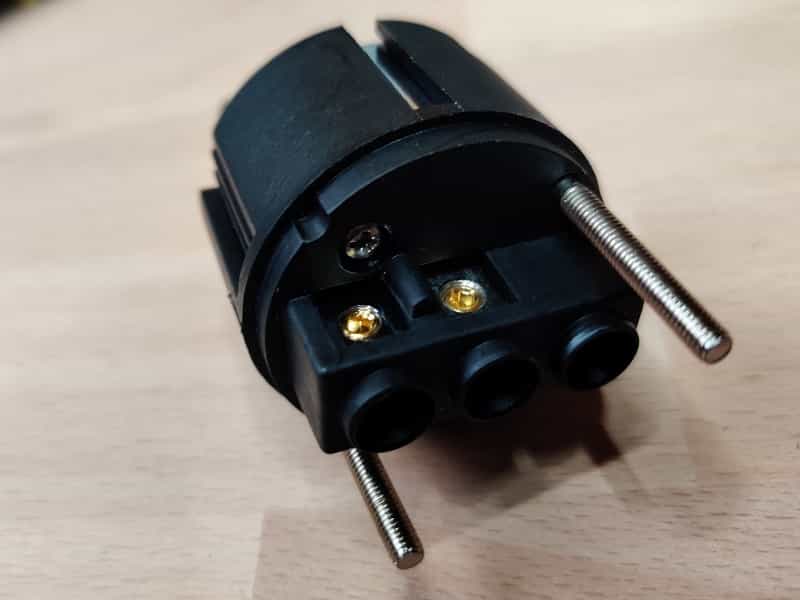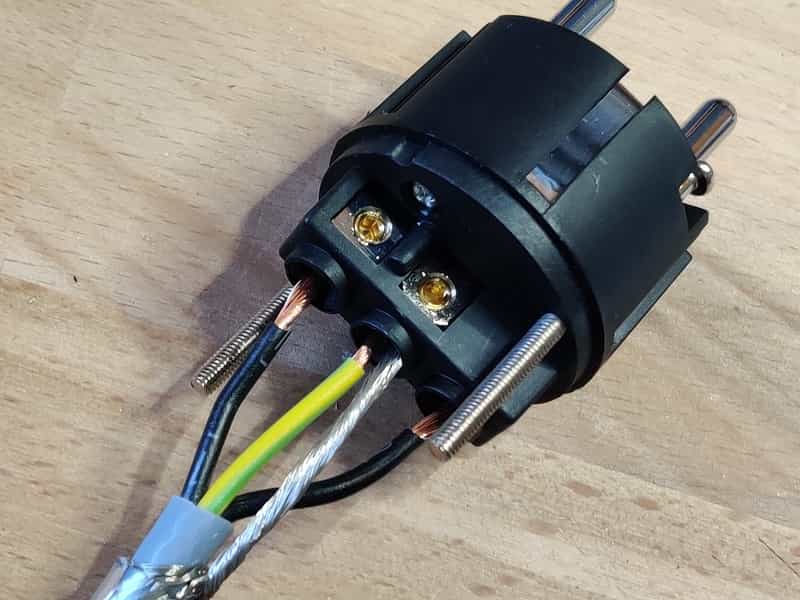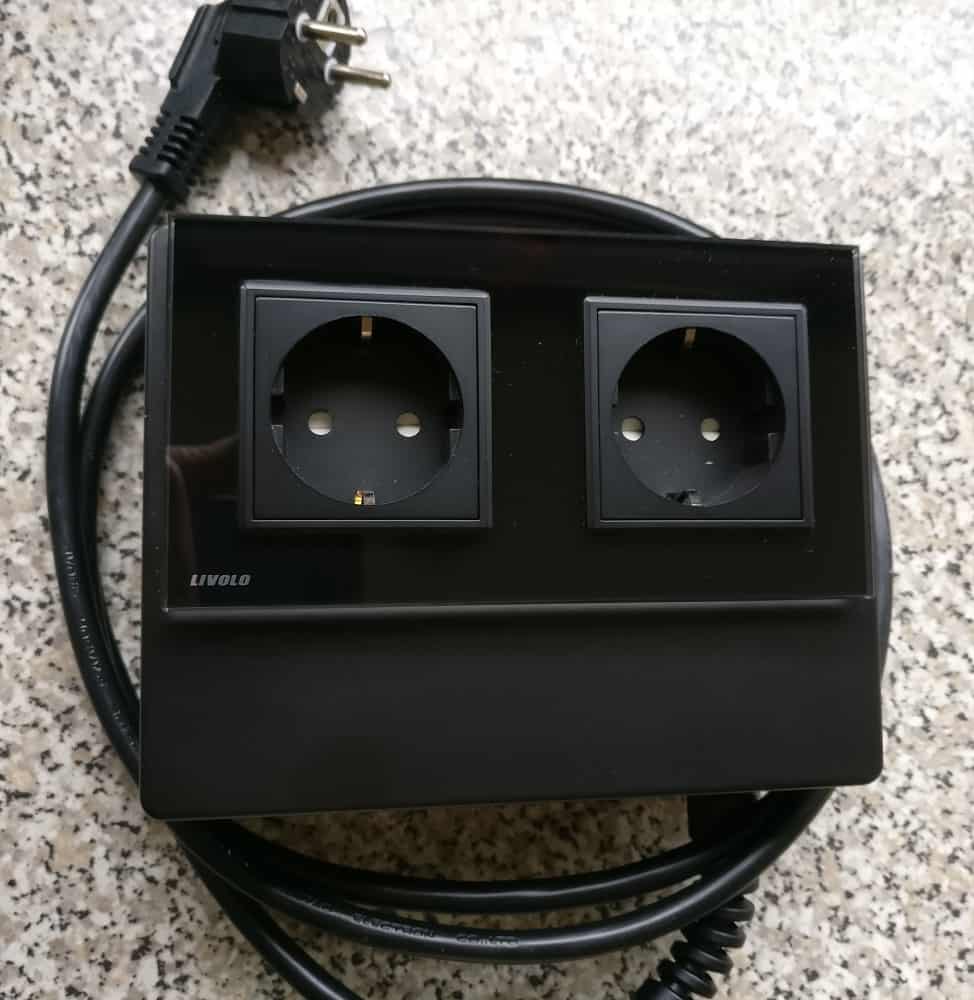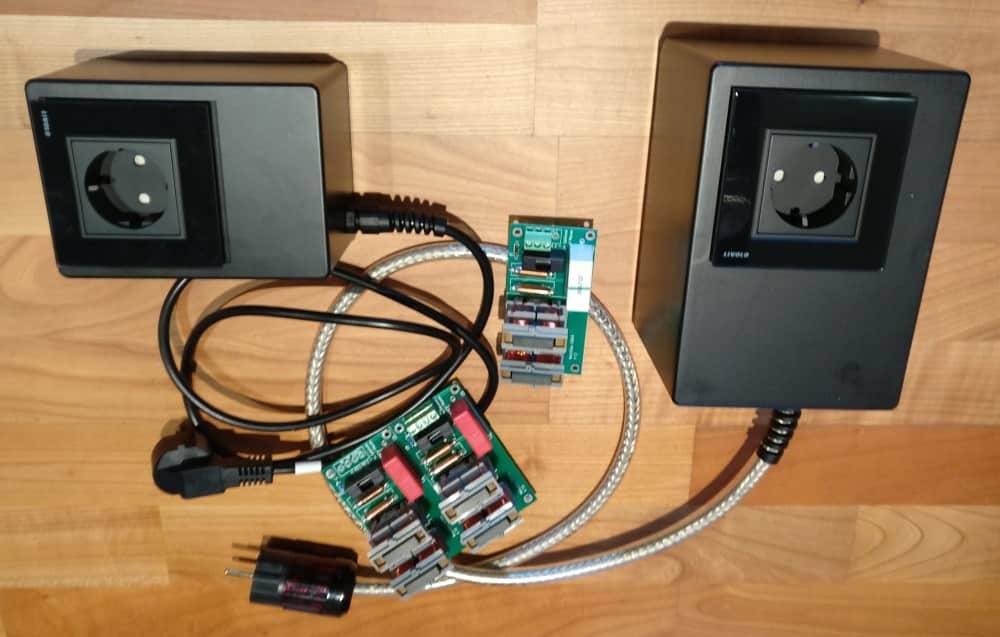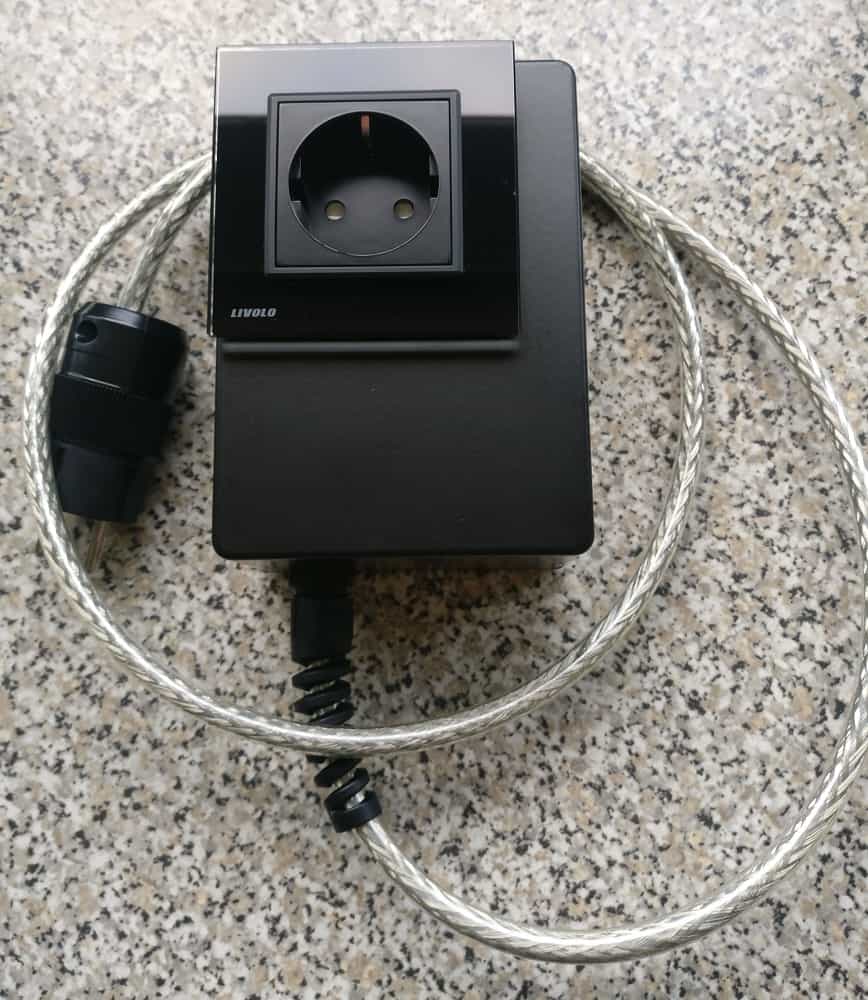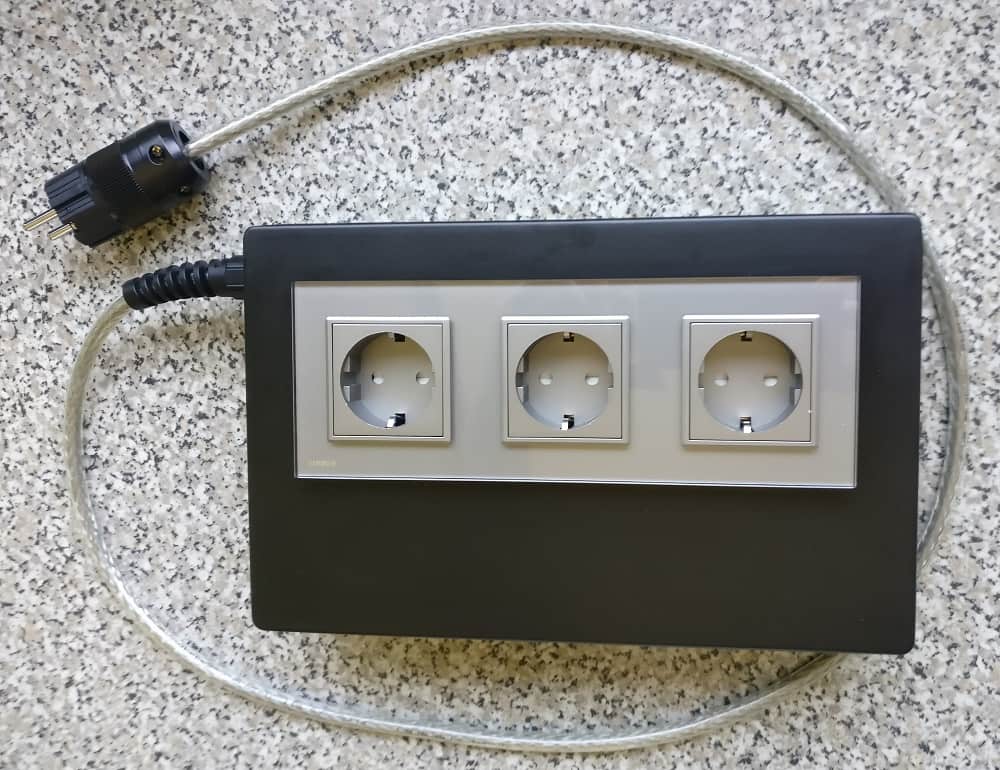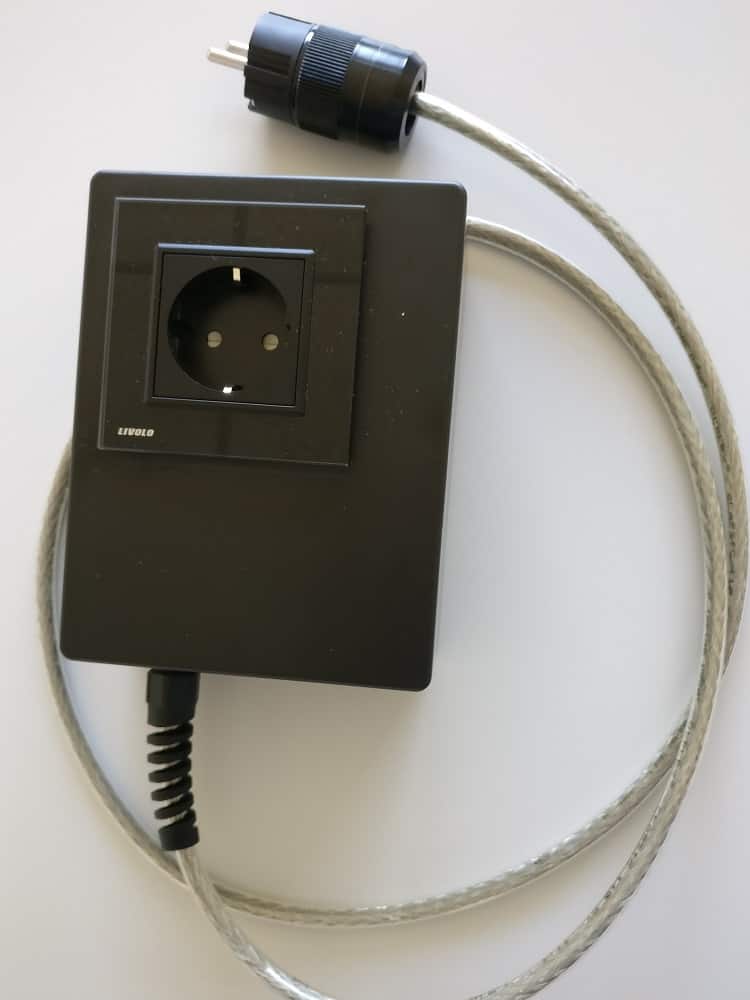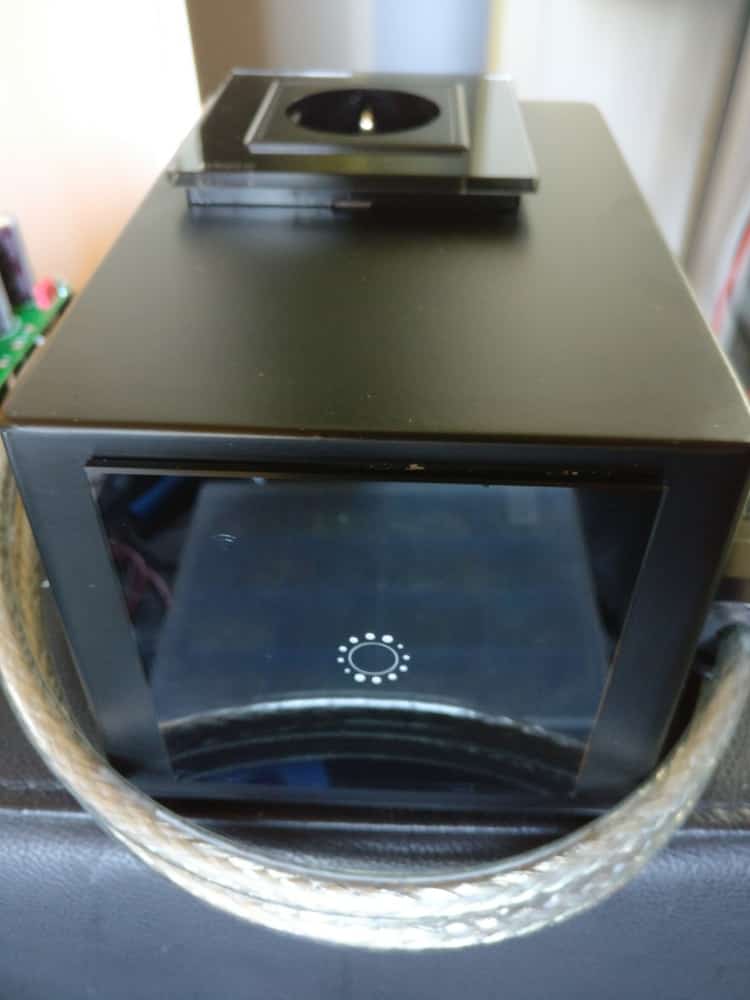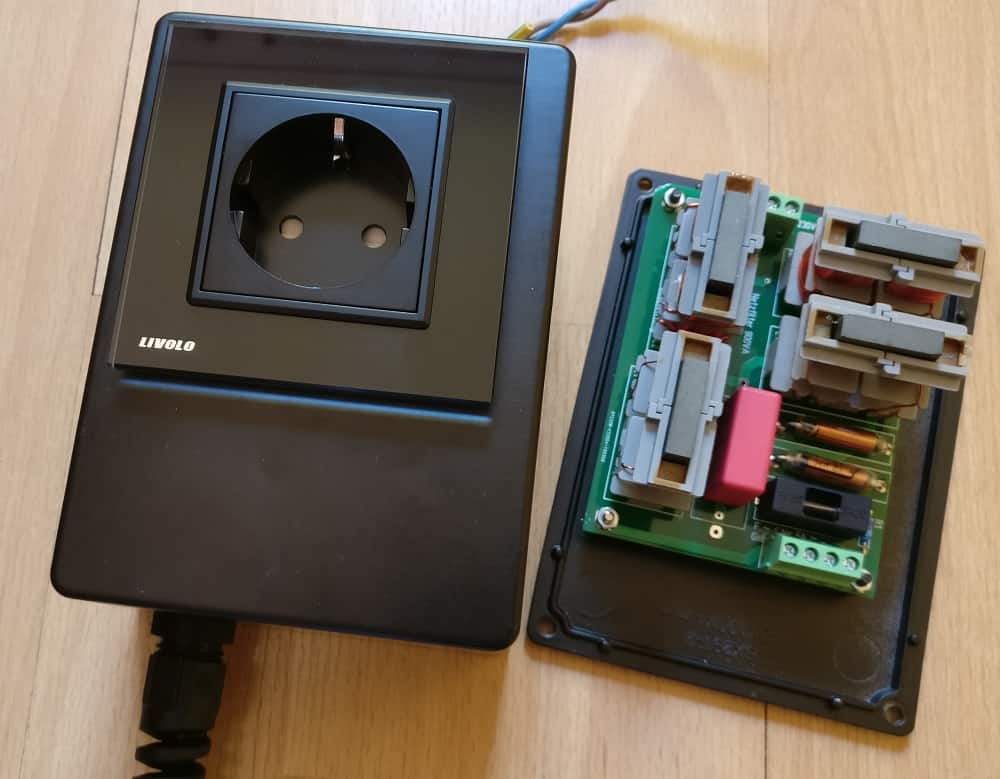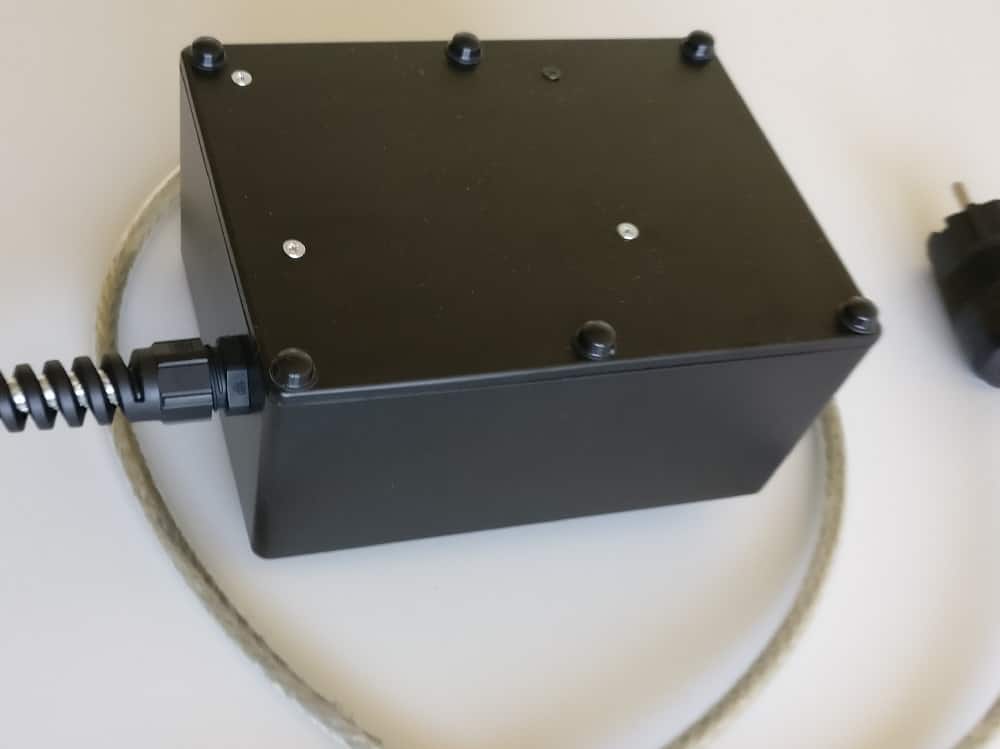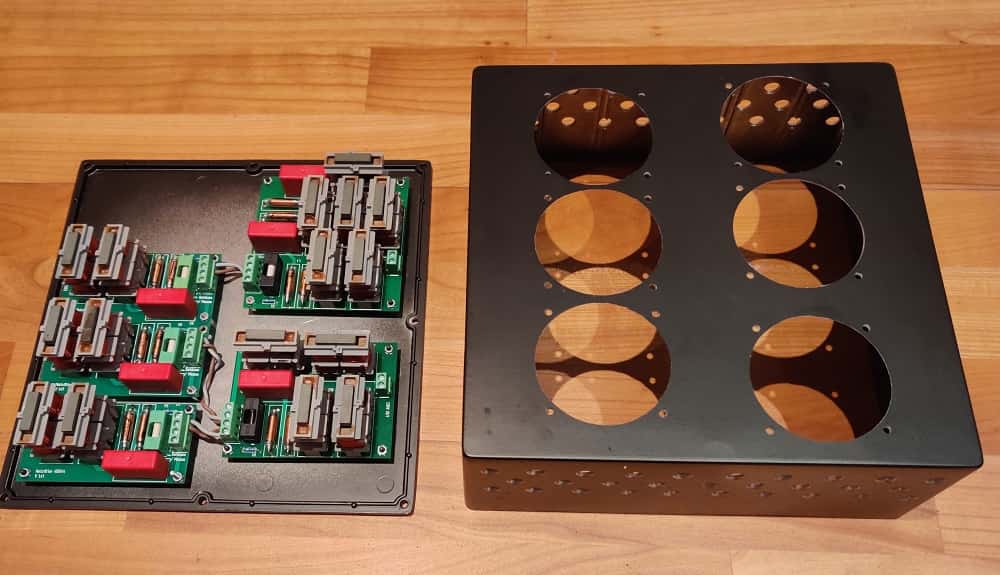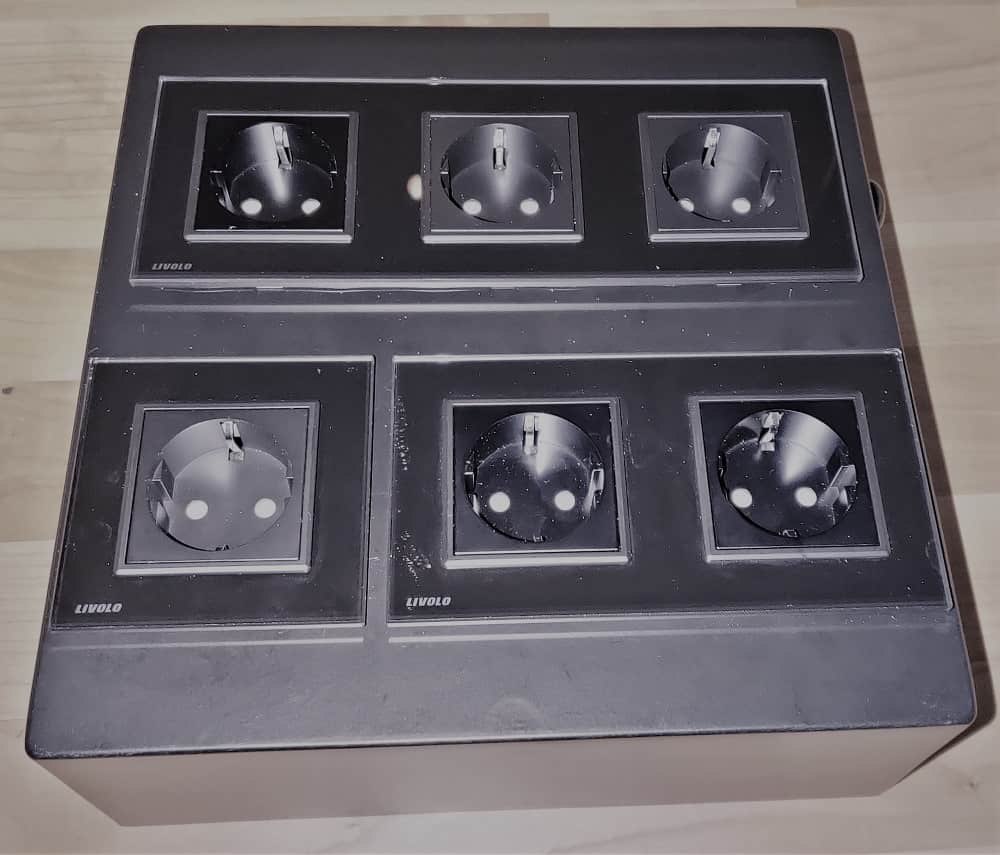The mains filter
Development and realization by Frank Wilker
This project description will be completed even further!
last change: 08.09.2022
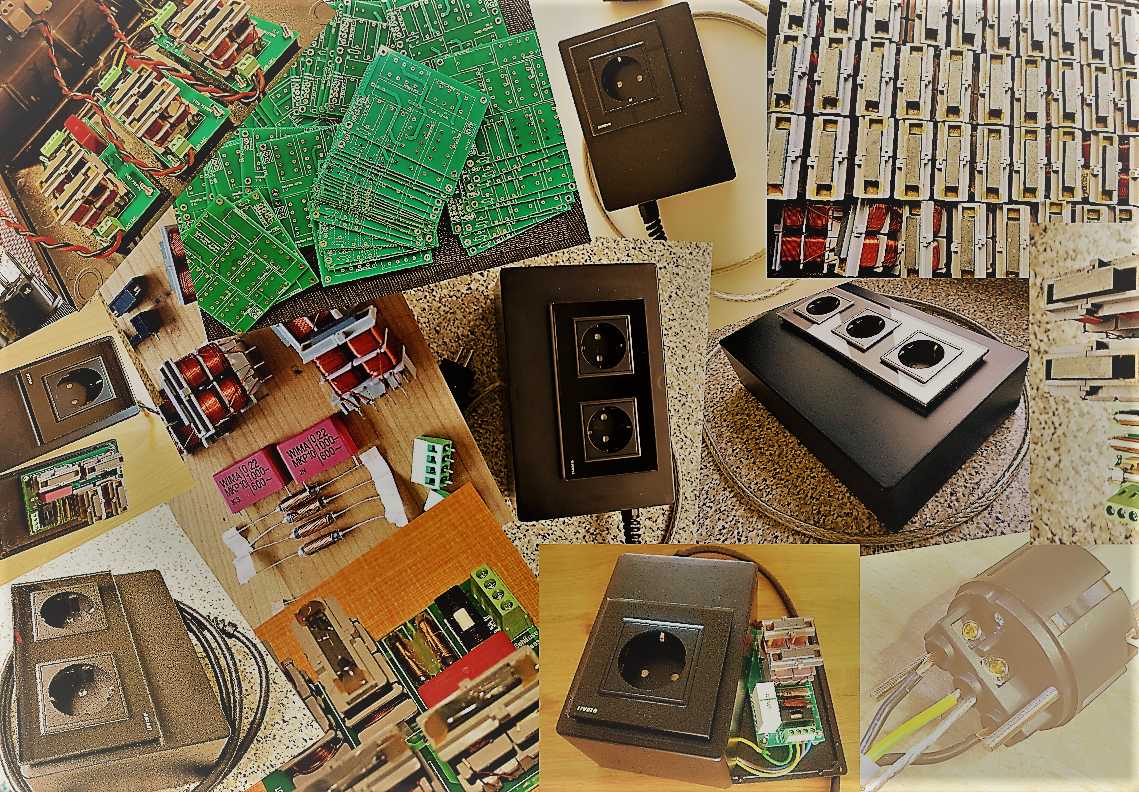
- design by Frank Wilker
- at Audio-Perfect.de
- posted 24. May 2020
How did it happen?
A kit, of which I immediately purchased several, got the ball rolling.
However, these kits did not find their way into my DIY tube amps for the time being. But the line filters were actually is provided for. So they became gifts for good friends. Surprised I noticed that there were further inquiries for more filters and even ready-to-use devices.
In fact there were many more buyers by word of mouth. And above all, there was a feedback, which made the function of the filter clearly confirmed. Of course I had become curious now. So the logical consequence was to test the filter. No sooner said than done; big surprise. There was a noticeable difference in sound.
At the same time, there were still enquiries about mains filters. So I ordered kits again. The seller of the kits probably saw the chance to sell its line filter stock quickly. From my point of view it was a fair offer at the time. Although. design of the kits was not really suitable to convince a customer to buy. A circuit board made of Pertinax, capacitors from the tube era (nothing against tubes please), wobbly fuse holders and the connections were made by solder nails!
At first I didn't care about the looks. I now had more mains filters than necessary and could fulfill all wishes.
Further development
I had now started to adjust the mains filters in the big auction house and often had to ask suspicious questions, whether the filter would do it at all. In my direct way, I had it without a great marketing plan described. I knew that filter was working perfectly.
The old-fashioned design was ultimately the reason to give the filter a contemporary, visually appealing circuit board. And while I was at it, there were further improvements:
- The chokes have been replaced with modern types (and higher currents)
- A brand product was used as a capacitor
- screwable connection sockets
- The rickety holders for the fuse were then also replaced.
The screwable connection terminals ensured that even unneeded DIYers could easily integrate the board into an existing device. A brilliant marketing move by me (little joke). After all, the story already looked much more professional.
But the most important part of the filter remained: chokes, transformers, whatever you want to call them. In total, there are two double common choke inductors and two single filter chokes of different values, which act on the light- and neutral conductors. These filter the lifeblood of our hi-fi system symmetrically. This filter array has a broadband effect right into the MHz range. This removes the overlaps and interference on our mains voltage.
Today, three circuit boards are available with outputs of 500VA, 920VA and 1500VA. These can be combined with each other as required in a device/power strip.
Case construction
My first complete devices consisted of a raw aluminium housing to which I attached damp-proof sockets with hinged lids. For this purpose, a ready-made power cable with a moulded plug is fed directly into the device; finished. A cheap strain relief made the whole thing complete. Fortunately my buyers were design resistant, as they wanted to be able to hold the filter in their arms as soon as possible. I didn't really like the whole thing; so brainstorming was the order of the day.
What I had learned in the meantime was, what looks cheap, is also considered cheap and if possible, also pushed down in price. Regardless of the quality of the product. I had already learned this in the initial phase of the kits. So go into the full? Put on a real high-end product? The built-in filter would be suitable for this. This much I can already see here.
When I see how some socket strips are marketed with (only) reinforced contacts, I have to say all credit to them. The described strip really exists and should cost over 1000€. After all there were six sockets on it. I hope you understand my kind of humor a little. Otherwise you probably won't feel like reading any more anyway.
Of course, I had looked around the market and had spiked with other manufacturers. Devices with a real filter function are few on the market. Almost all of them are in the high-priced segment, at least four-figure sums are to be sunk. But these should actually work. Then there are the devices that are equipped with thick cables, braided conductors and "rarely" with a few chokes. These are ONLY expensive (just three digits). Somehow I feel a little bit fooled right now!
But one thing was the same for all the devices: they looked professional. Some devices are built into cabinets, my amplifiers would look out of the wash with envy. And this is of course also the reason for the price. A company has to develop, build, market, pay employees and then sell the equipment. So the selling price must be about 10 to 20 times the cost of production.
With these considerations I have arrived at the point that is important to me. I don't want to sell anything by suggesting that my device is the best through a noble design and excessive prices. Please don't take this the wrong way. Of course there are manufacturers (even many) on the market who sell a high-quality product at an adequate price.
My conclusion is: My customers get an adequate value for their money. If the customer is not satisfied, he gets his money back. And that's it! And the filter gets an attractive appearance.
After I sorted that out for me, I went to work. I don't want to bore you with details, but it wasn't an easy story. I found black lacquered aluminum cases that offered a very good compromise between price and functionality. They are available in different sizes, well available and besides that they are easy to work with.
The other components
A few hastily ordered test sockets, in order to be able to deliver the new owner his device as quickly as possible, were the direct hit: Perfect optics paired with high-quality workmanship, glass painted in black or gray background and even scratch-resistant; WOW. So this problem was quickly solved.
A strain relief with bend protection for the power cable was quickly found. With the connection cable I had to fight against pluggable solution. Since I wanted to use a high quality shielded cable and the filter has the task of irradiation (including the zero-commanix irradiation captured by the power cord), a pluggable Solution dispensable. My choice fell on the Ölflex Classic CY110 in 3 x 1.5mm². On request I can of course also use 2,5mm² Cable.
Here is a short advertisement (I love it) about the cable:
- suitable for EMC critical environment (electromagnetic compatibility)
- Space-saving due to small cable diameter
- High electrical safety through 4 kV test voltage
- Fine stranded strand of bare copper wires
- PVC core insulation LAPP P8/1
- PVC- inner jacket
- grey, copper braiding, tinned
- Jacket made of PVC, transparent
- cores stranded in layers
- VDE Reg. No. 7030
- Flame retardant according to IEC 60332-1-2
- Good chemical resistance
- High degree of coverage of the shielding
- low coupling resistance (max. 250 O/km at 30 MHz
Now find another plug. We / I don't need such a show-off from Furutech (for 80€). Gold is beautiful, give it to your wife. I take a plug with rhodium plated contacts. The plug is high quality manufactured. It would take even 8mm² cables and would hold the screw connection even if you do violence to it.
I now build my mains filters from these indegrinations. A presentation of some existing models can be found below. A "real" net bar is also in planning in the meantime.
Available models
Here some older models of the 1st generation
Here are some current models, which I offer in the big auction house:
There are no limits to the imagination here. More sockets are just as possible as combining different outputs in one device. I have documented the construction of a customer request below.
Further insights:
Somehow no one has ever been interested in the network filter, which can be switched by Alexa, via Google or an Android. Don't modern people like net filters?
An example
Uwe wrote to me with the wish to configure a mains filter for him.
His wishes were as follows:
- In any case a 2,5mm² cable, in 7 meters length
- 6 sockets, the negotiations varied from 4 to 8 sockets
- 3 x 450VA at three sockets
- 900VA at one power socket
- and 1450VA at two sockets
- Cooling holes in the housing
The three rows of holes (on each side) for cooling could probably have been slightly smaller.
The original statement from Uwe:
"The remaining noise has become audibly quieter, though not gone. The music is -subjectively- a bit clearer and very slightly less sharp, I mean..."
Updates
Other buyers had problems with another disturbance. Since a remote diagnosis is always difficult, I had to guess. However, the error description clearly sounded like a DC load on the primary side of a mains transformer. So once again "Just fast" built a DC filter together and sent it to the far north. Bingo: much less interference and therefore this filter is now also in my repertoire.
Click here for the project page: DC filter
